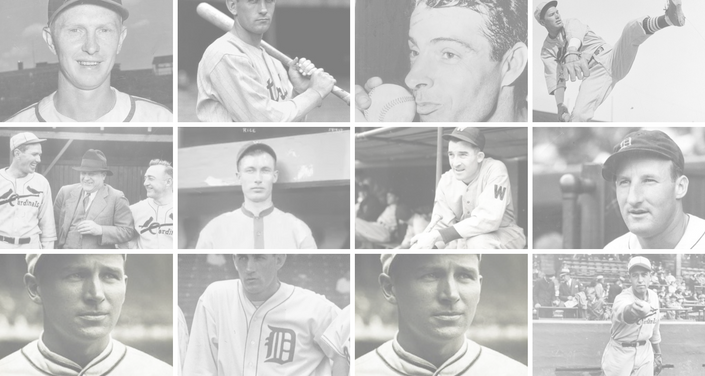History of the World Series – 1967
While Gibson had won 19, 20 and 21 games in the previous three years and was bound for even greater success in the next three seasons, 1967 was in many ways most representative of the man’s will to win and his ability to turn that determination into success.
Forced to settle for 13 regular-season victories for the surprising Cardinals, who raced to a 10 1/2-game victory margin in the National League race, Gibson was ready to shoulder the load in the World Series against an even more upstart aggregation: The Boston Red Sox.
Under rookie Manager Dick Williams, the Red Sox were the victors in a torrid four-team American League pennant chase, finishing one game ahead of the Detroit Tigers and Minnesota Twins and three games in front of the Chicago White Sox after ending up ninth in 1966. The Triple Crown season of Carl Yastrzemski and the pitching wizardry of Jim Lonborg were principal factors in Boston’s realization of its “impossible dream” rise to the pennant; Yastrzemski bashed 44 home runs, drove in 121 runs and batted .326; Lonborg won 22 games, 10 more than anyone else on the Red Sox’s staff.
The Cardinals, sparked by slugging Orlando Cepeda (25 homers, 111 RBIs and a .325 batting mark) and known as “El Birdo” largely in tribute to the first baseman’s leadership, gave Red Schoendienst a pennant in his third year as St. Louis manager. Other key contributors besides Cepeda, a May 1966 acquisition from the San Francisco Giants, included outfielders Curt Flood (a .335 hitter), Lou Brock (52 stolen bases), 29 year-old rookie righthander Dick Hughes (16 victories) and young pitchers Nelson Briles and Steve Carlton. The 24-year-old Briles, converted into a starter after the loss of Gibson, won his last nine decisions of the season and, like the 22-year-old Carlton, won 14 times overall.
Then there was Gibson, who had won 10 games by the time of his injury and lost only once (by a 2-1 score) after his return. When the ’67 Series opened in Fenway Park, Gibson got the ball.
Matched against Jose Santiago (Lonborg had pitched on the final day of the regular season), Gibson emerged a 2-1 winner as he allowed only six hits — one of them a homer by Santiago — and struck out 10 batters. Roger Maris, a valuable addition to the Cardinals’ roster after being obtained from the New York Yankees in December 1966, knocked in St. Louis’ runs with third and seventh-inning ground balls.
In Game 2, Yastrzemski and Lonborg continued where they left off in the regular season. Yastrzemski clubbed two homers good for four runs and Lonborg pitched no-hit ball for 7 2/3 innings before winding up with a one-hit (Julian Javier’s double), 5-0 triumph.
Then, with the action shifting to St. Louis’ Busch Memorial Stadium, which had opened in 1966, the Cardinals rolled to 5-2 and 6-0 victories. Briles’ seven-hitter and Mike Shannon’s two-run homer proved decisive in Game 3, while Gibson’s five-hit hurling and two RBIs apiece by Maris and Tim McCarver foiled Boston in the fourth game.
Lonborg was in sensational form again in Game 5, thereby keeping the Red Sox in the Series and sending the teams back to Boston. The 25-year-old righthander tossed two-hit, shutout ball over 8 2/3 innings, then settled for a 3-1 decision when Maris rammed a last-gasp homer to right.
Going for the clincher in enemy territory, the Cards took a 2-1 lead into the fourth inning of Game 6 when Hughes proceeded to negatively write his name into the record books. The NL leader in winning percentage (.727) in 1967 after spending nine years in the minor leagues, Hughes was bombed for a Series-record three homers in one inning. Yastrzemski led off the fourth with a drive over the wall in left-center and, two outs later, rookie Reggie Smith and Rico Petrocelli belted consecutive shots, Petrocelli’s smash being his second of the game.
Brock tied the game at 4-4 with a two-run homer in the seventh, but Boston retaliated with four runs in the last half of the inning — Joe Foy’s double broke the deadlock — and scored a Series-squaring 8-4 triumph.
The pitching matchup for Game 7 was what many observers had waited for all along: Gibson vs. Lonborg. Gibson was 2-0 thus far in the Series, having allowed only one run and 11 hits in 18 innings; Lonborg also was 2-0, having given up one run and a mere four hits in 18 innings. Gibson would enter this head-to-head meeting of aces with three days of rest, Lonborg with two.
Gibson was far superior, permitting only three hits and striking out 10 batters. Plus, he nailed Lonborg for a home run in the fifth. Javier then belted a three-run shot off Lonborg in the sixth, and Schoendienst’s club was on easy street. It was a path down which the competitive Gibson was clearly qualified to lead his team. For the second time in four years, he pitched a complete-game victory in the Series-deciding game. This time, the score was 7-2.
Gibson now boasted a 5-1 record and a 2.00 ERA in World Series competition, with 57 strikeouts in 54 innings and only 37 hits allowed. You hardly could expect anyone to pitch much better in the fall classic.


